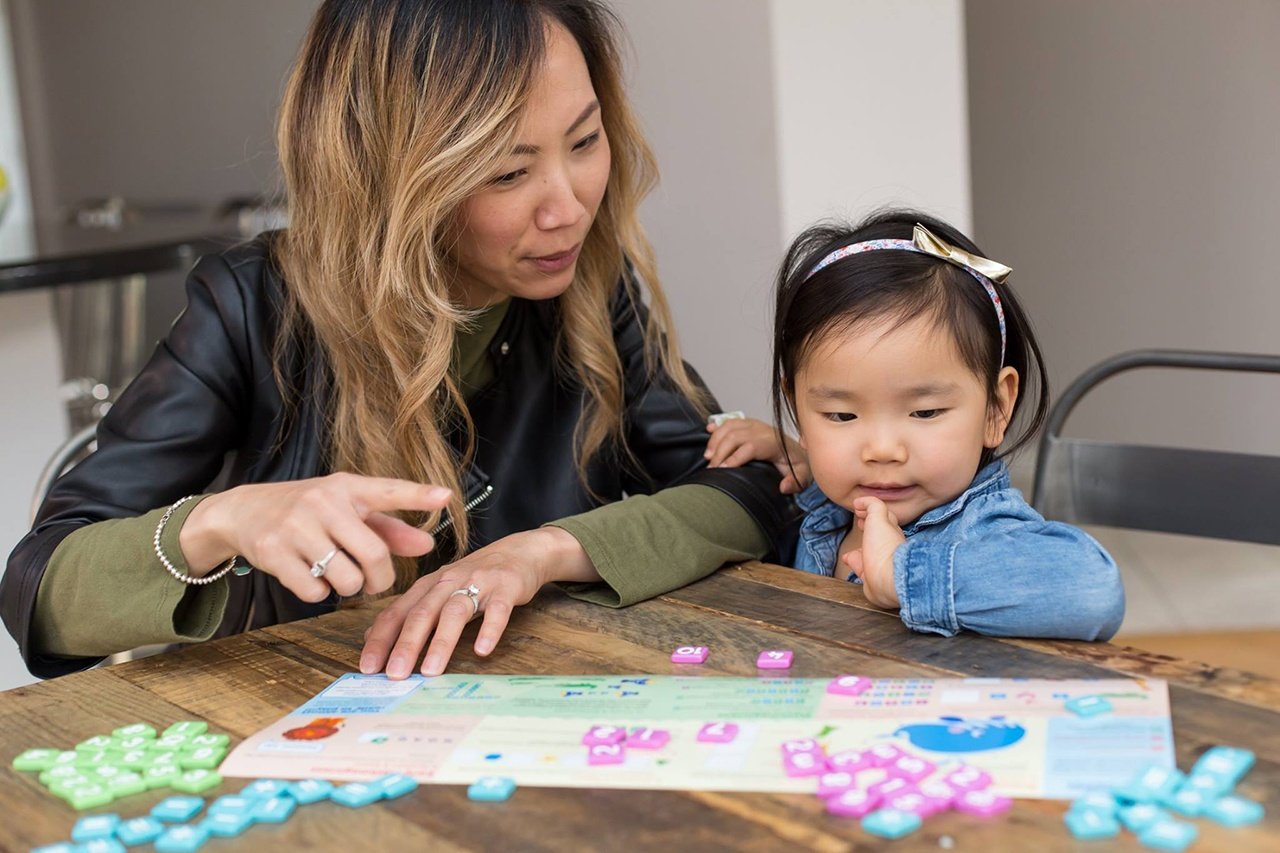People ask our team at Scholar's Choice every day, "What is the age group this game is for?"
While most games makers do recommend the ages they think their game is most appropriate for, we find that our answer is often, "Well, how old are your kids?"
Most games can be adapted to suit a range of ages, beyond what is listed on the package, the trick is simply to adapt the rules to fit your little learner's needs.
1. Mobi
Mobi is like Bananagrams, but with math instead of letters! Simply play numbered tiles and symbols to create equations. The first person to use all of their numbered tiles wins!
Adaptations for older children:
- Play a version with only double digits allowed.
- Add a rule that each equation must include more than two operation tiles.
Adaptations for younger children:
- Take out the multiplication and division signs for younger players. If your child is working on their addition skills, take away all the operation tiles except the + and the =. Add tiles as they learn to use them in school.
- Forget the fast pace, and divide up the tiles equally. This way children won't feel pressured and can work at their own speed.
- Create a number sensory bin. Have children find the '3' tile, then write a '3' themselves.

2. Math Squared
This game is great because it is built with levels of difficulty right into the game, as there is an addition side on the board, and on the flip-side is multiplication. Roll the dice and either add or multiply the numbers together, and place your marker on the correct spot. Line up three markers and you win!
Adaptations for older children:
- Total up the numbers under your markers at the end of each round, and play until you get to a certain score.
Adaptations for younger children:
- Start play with 6-sided dice, then move to a 9-sided, then finally a 12-sided. This will ensure you start out without the high numbers and progress at your own pace.

3. Honeycombs
Adaptations for older children:
- Challenge older children to use all the tiles, building them across the floor.
- See if you can fit a tile in the middle of six tiles (one on each side) with all the sides matching. It's hard, but it can be done!
Adaptations for younger children:
- Similar to Mobi, these thick tiles are great for young hands and sensory bins. Place a few tiles in a bin along with some insta snow or sensory rice, and have children pick out something that is green, or two brown bears.

4. What Letter Do I Start With?
The premise of this game is simple: pick a letter card, then find an image that starts with that letter on the board and place your marker on that object. The first to 10 wins.
Adaptations for older children:
- Instead of finding words that start with the chosen letter, challenge children to find objects where the chosen letter is the second or third letter in the word.
- Play with a pad of paper, and have children spell out the words as the find them.
Adaptation for younger children:
- For children who don't know their letters yet, this game can be a great way to learn their colours! Play with the same rules, but instead of letters, be the first to find an object that matches the chosen colour.

5. Rory's Story Cubes
Adaptations for older children:
- Decide on a theme, and make a rule that all stories much adhere to that theme. For example, all stories must be scary, all stories must feature members of your family, or each story has to end with a twist. The themes can change every time you play!
Adaptations for younger children:
- Create your story together! Roll the dice and begin the story, then help your youngster come up with the next part of the tale. Alternate like this for a fun cooperative game.
- Play with fewer dice. Start out with two, and move up from there.







.png)
.jpg)
